Introduction
The evolution of land use planning reflects a growing recognition of the intricate relationship between urban development and environmental sustainability. As communities grapple with the challenges posed by rapid urbanization and climate change, the role of planners has expanded beyond simply managing land to fostering holistic approaches that consider ecological impacts, economic viability, and social needs. This article delves into the foundational concepts of land use planning, explores the critical processes and stakeholder dynamics involved, and evaluates both the benefits and challenges faced by planners today.
Furthermore, it highlights the importance of integrating sustainability into planning practices and anticipates future trends that will shape the landscape of land use in the years to come.
Foundations of Land Use Planning: History and Key Concepts
Land use planning has evolved significantly over the decades. Initially focused on urban development, it now encompasses a broader range of considerations including environmental impact, community needs, and economic viability. Key concepts such as:
- Zoning
- Use types (residential, commercial, agricultural)
- Tenure systems
are crucial for planners to understand. Historical milestones, such as the establishment of zoning ordinances in the early 20th century, illustrate the evolution of development practices aimed at organizing use in a manner that promotes community welfare and sustainable progress.
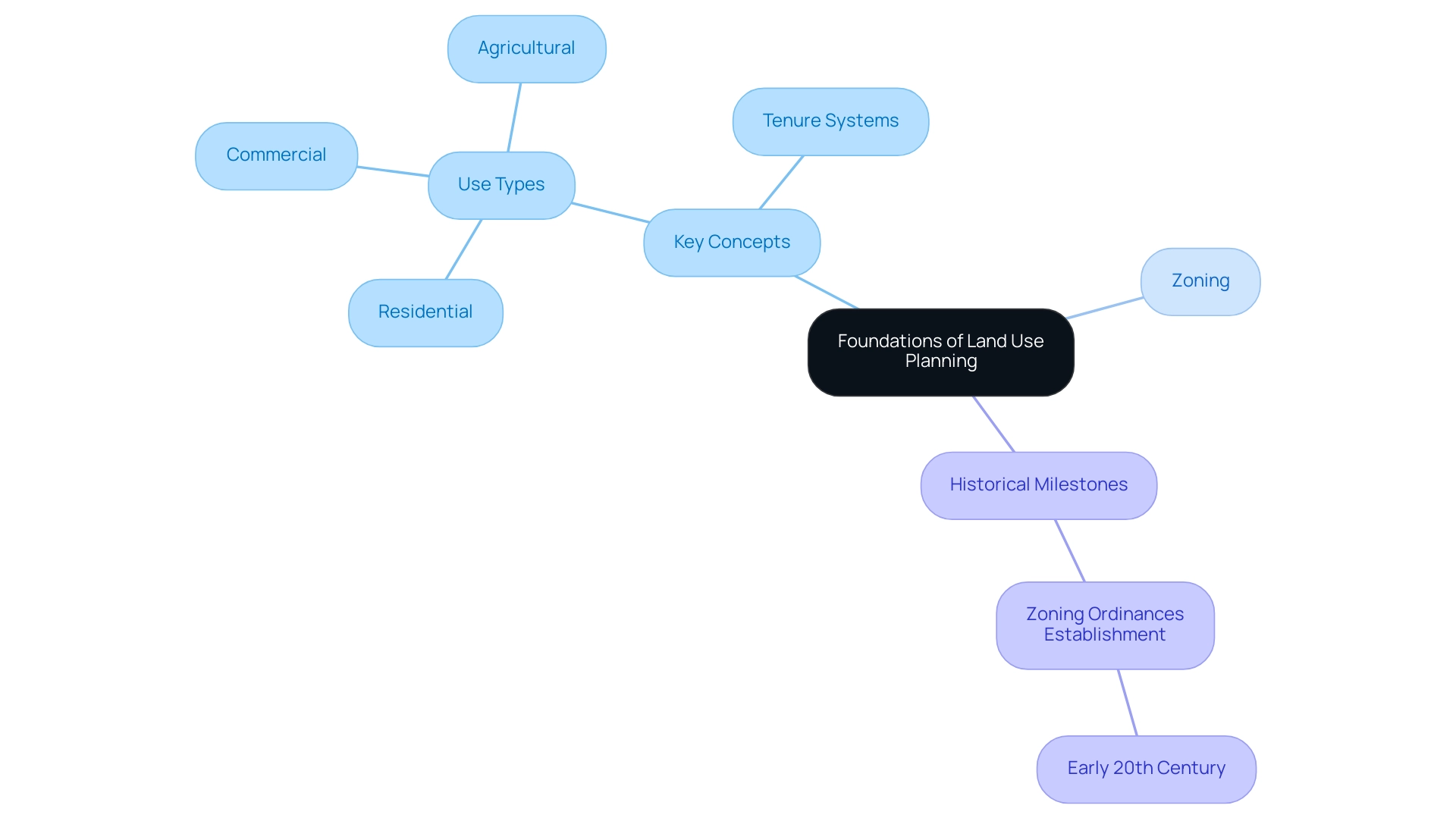
Navigating the Planning Process: Key Stakeholders and Procedures
The land use development process typically involves several stages:
- Research
- Stakeholder engagement
- Drafting plans
- Public review
- Implementation
Key stakeholders consist of:
- Local government representatives
- Community members
- Developers
- Ecological organizations
Planners must facilitate discussions among these groups to gather input and address concerns. Effective communication and negotiation skills are essential during this process, as they help build consensus and ensure that diverse perspectives are considered. Procedures may vary by jurisdiction, so understanding local regulations is also critical.
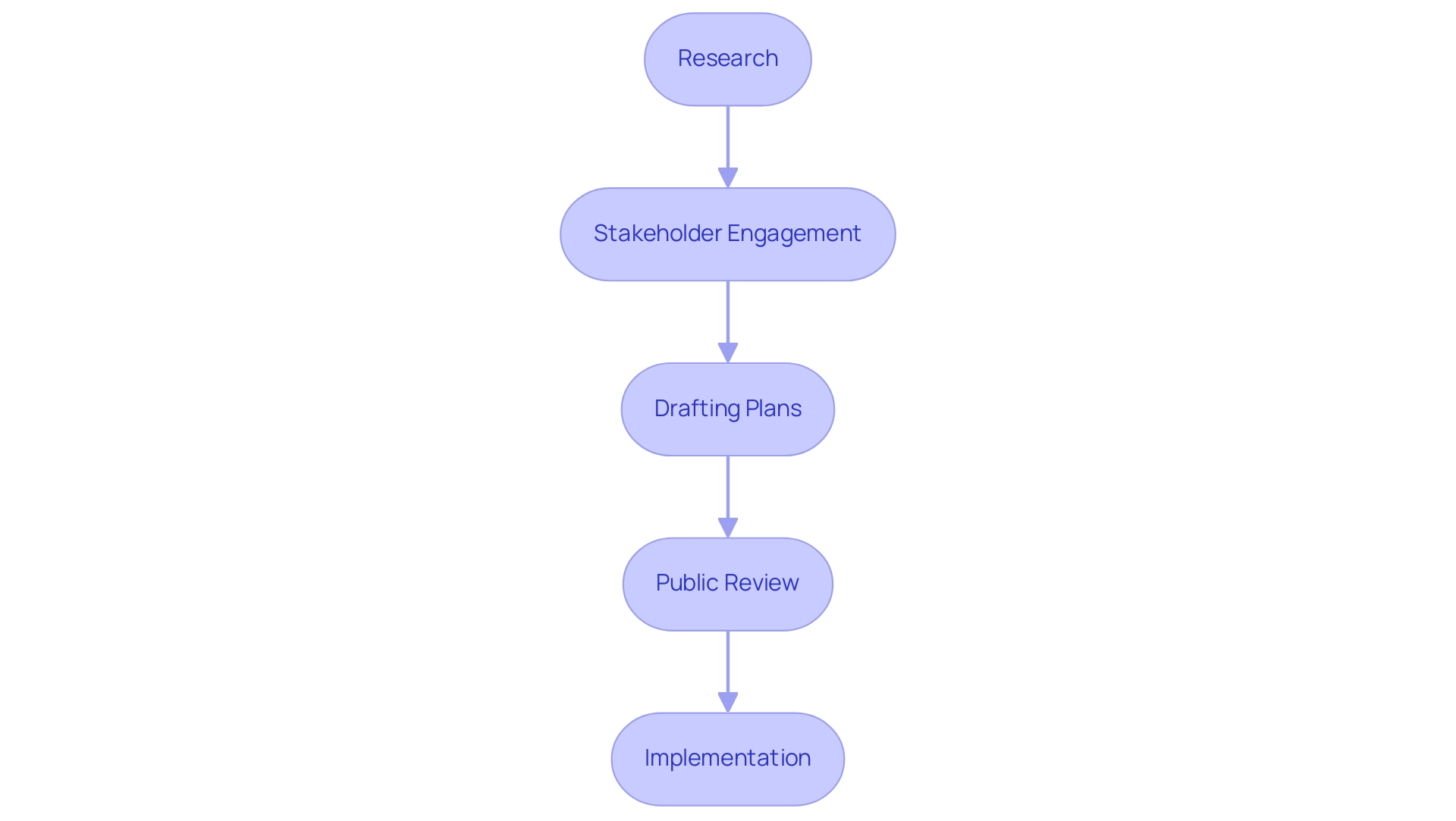
Evaluating the Benefits and Challenges of Land Use Planning
Land use management provides various advantages, such as:
- Better community organization
- Strengthened ecological protection
- Expanded economic opportunities
However, challenges such as:
- Conflicting stakeholder interests
- Regulatory hurdles
- The need for ongoing public engagement
can complicate the process. Planners should be prepared to address these challenges by developing strategies that promote collaboration and adaptability. For example, employing community engagement techniques can help mitigate resistance and foster a sense of ownership among residents.
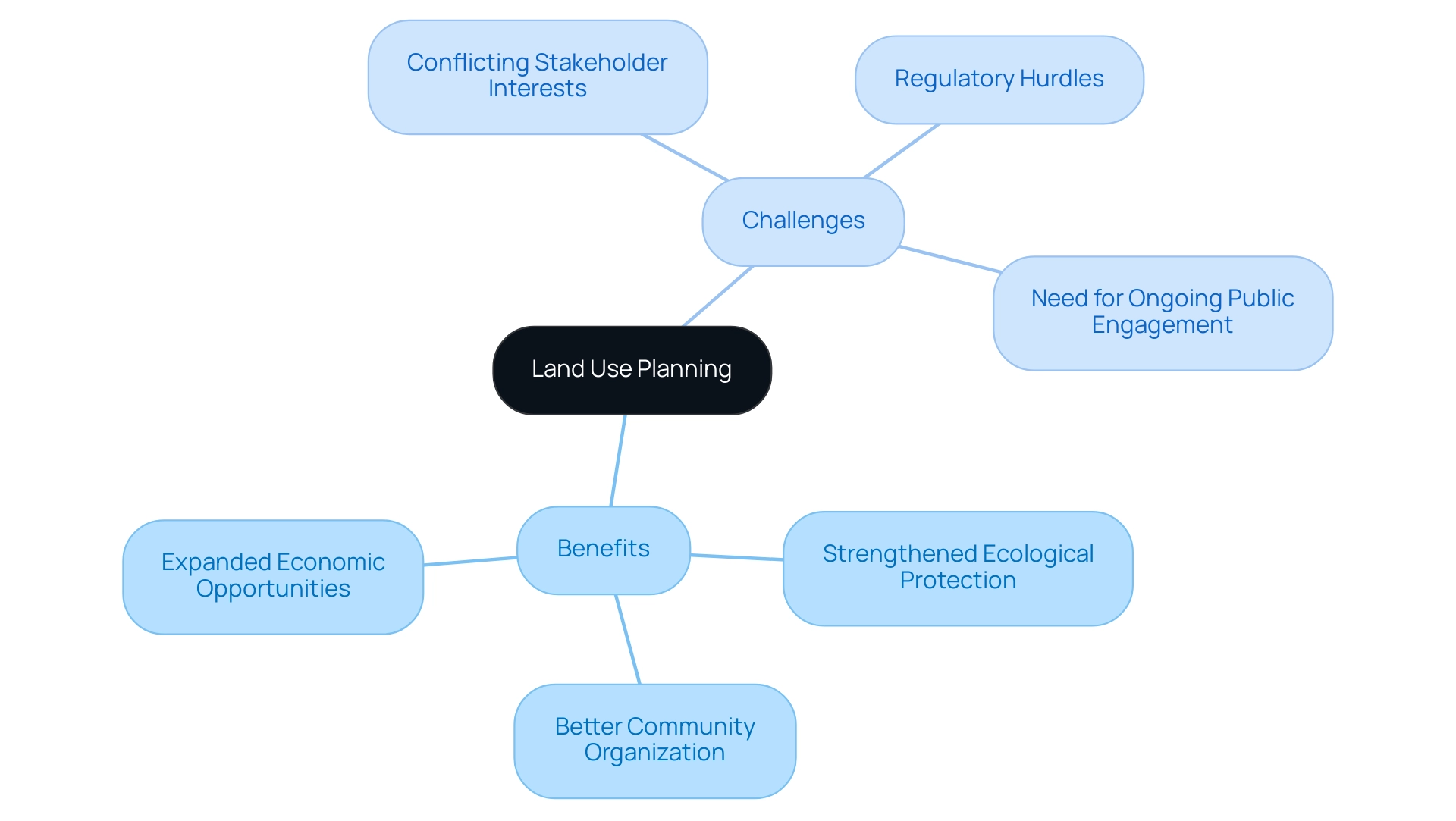
Integrating Environmental Sustainability into Land Use Planning
To effectively incorporate ecological sustainability into usage planning, planners should evaluate the ecological impact of proposed developments. This entails:
- Performing impact evaluations (EIAs)
- Utilizing GIS mapping to visualize usage patterns
- Promoting green infrastructure solutions
Planners can implement zoning regulations that prioritize conservation areas while encouraging sustainable development practices, such as:
- Mixed-use projects that minimize resource consumption
- Transportation emissions
Cooperation with ecological stakeholders is essential to align objectives with ecological integrity.
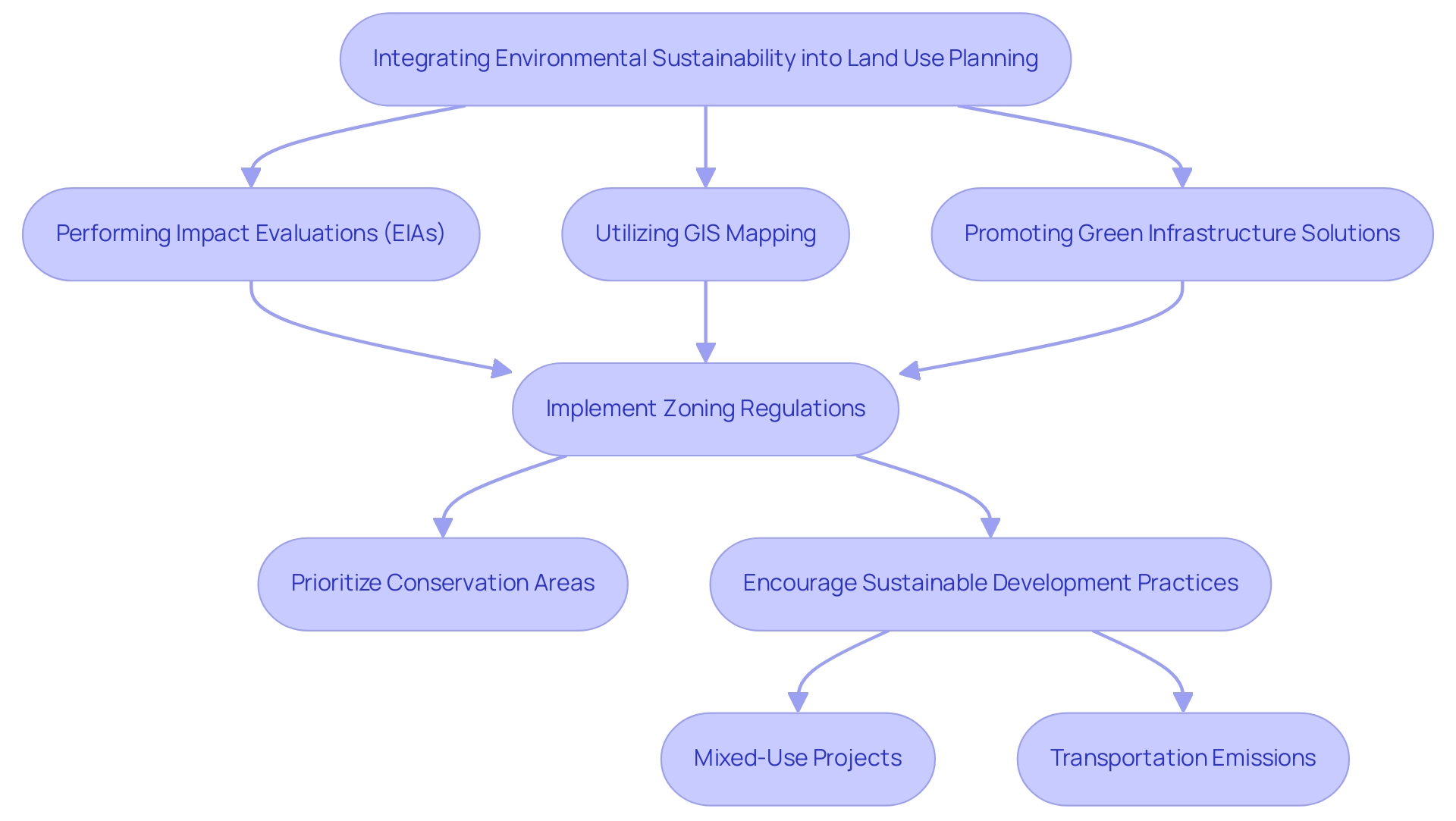
Future Trends in Land Use Planning: Innovations and Challenges
Future trends in land use management include the increasing use of technology, such as AI and big data analytics, to inform decision-making. Planners are also likely to encounter more stringent environmental regulations and a growing emphasis on climate resilience in planning practices. Additionally, community engagement is expected to evolve with the use of digital platforms that facilitate broader participation. Planners should remain adaptable, continuously seeking to incorporate new tools and approaches that enhance engagement and sustainability in their projects.
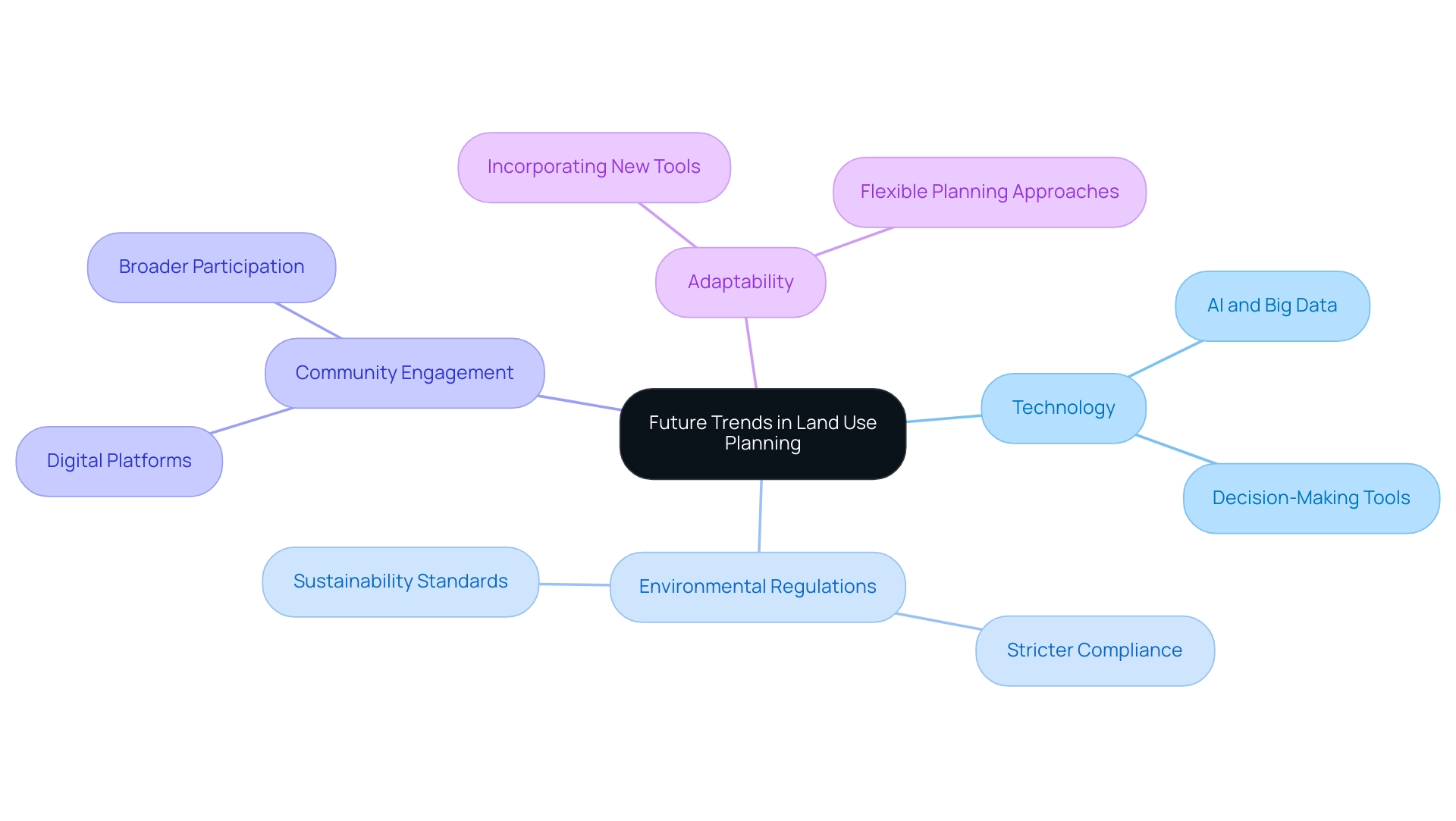
Conclusion
The exploration of land use planning underscores its vital role in addressing the multifaceted challenges posed by urbanization and environmental sustainability. As outlined, the evolution of land use planning has transitioned from a focus solely on urban development to a more comprehensive approach that incorporates ecological impacts, community needs, and economic viability. Understanding foundational concepts such as zoning and land tenure systems is crucial for planners as they navigate this complex landscape.
The planning process is inherently collaborative, involving diverse stakeholders who bring unique perspectives to the table. Engaging these groups effectively is essential for building consensus, addressing conflicts, and ensuring that community voices are heard. While land use planning offers significant benefits—such as enhanced organization, environmental protection, and economic growth—planners must also be prepared to tackle the challenges that arise, including regulatory hurdles and stakeholder resistance.
Integrating sustainability into planning practices is not merely an option; it is a necessity for fostering resilient communities and protecting natural resources. The adoption of innovative tools, such as GIS mapping and environmental impact assessments, allows planners to visualize and mitigate ecological consequences effectively. Looking ahead, the integration of technology and the emphasis on climate resilience are poised to shape the future of land use planning, requiring adaptability and a commitment to continuous improvement.
In summary, the future of land use planning hinges on the ability to balance development with sustainability, engage communities meaningfully, and embrace innovative solutions. As the field evolves, the commitment to fostering environmentally responsible and socially equitable development will be essential in shaping livable, thriving communities for generations to come.




